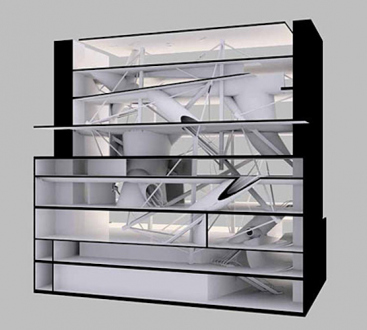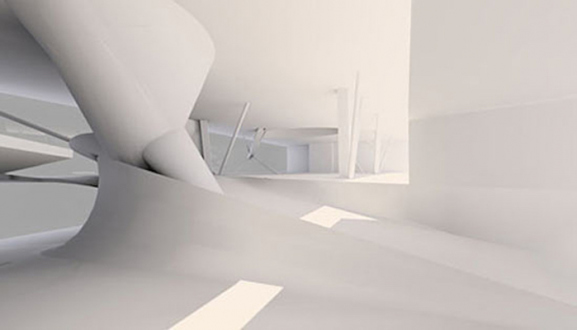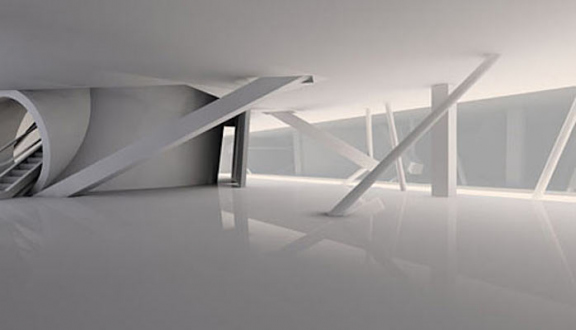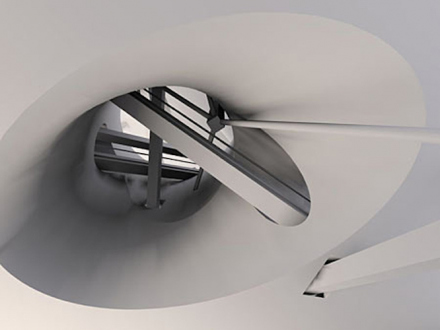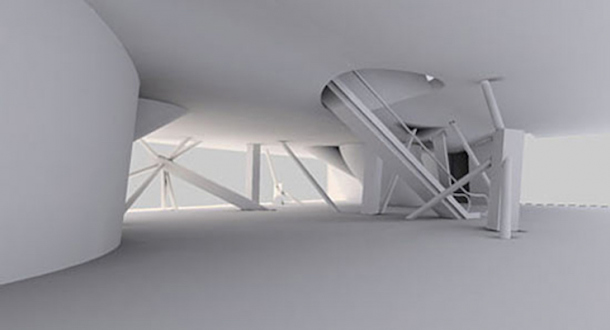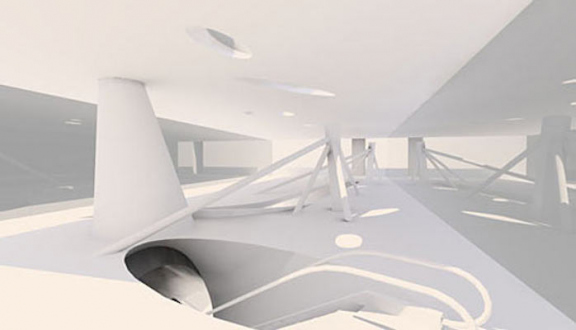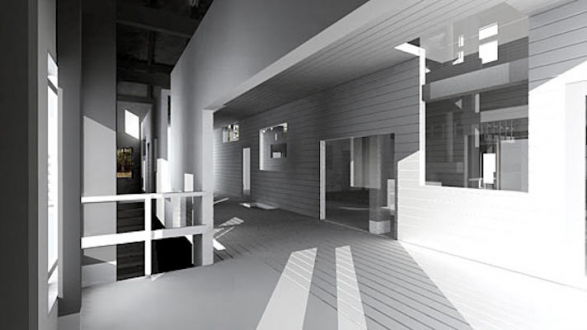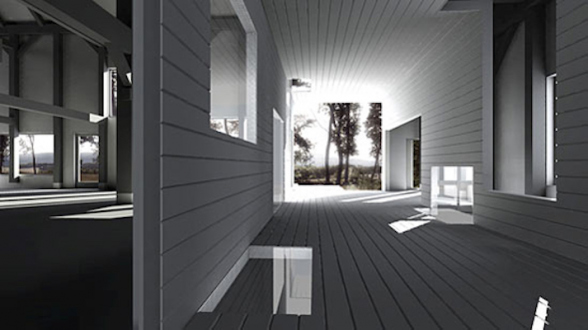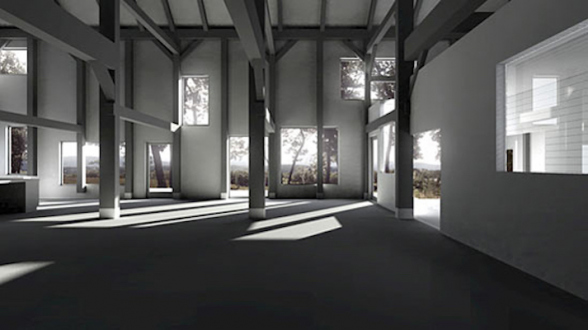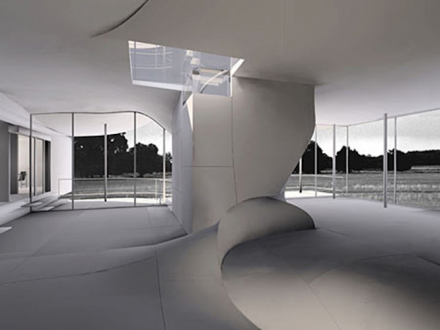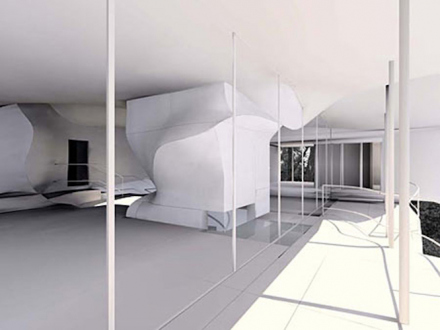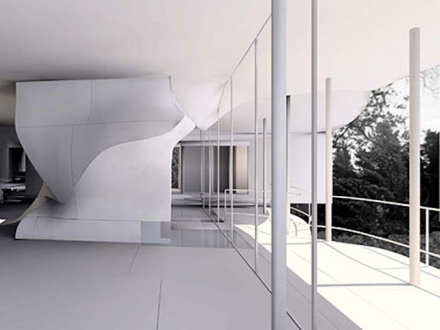Preston Scott Cohen – Toroidal Architecture (Works)
Selected Works
Preston Scott Cohen
Preston Scott Cohen – Toroidal Architecture Press Release
Thomas Erben Gallery is very pleased to announce an exhibition by architect Preston Scott Cohen entitled Toroidal Architecture, featuring digital renderings and diagrams of interior spaces from three proposals.
The overriding idea uniting the different projects is that of a torus, a donut shaped figure, in which the outside traverses the center reversing the familiar relation between inside and outside. Thus, for example, the core of the Torus House contains a stair allowing one to pass from a parking platform below the house directly unto the roof without entering the inside.
In Cohen’s second stage competition entry for Eyebeam Atelier’s Museum of Art and Technology, New York, 2001, the toroidal space takes the shape of cones and cylinders intersecting one another. The resulting sensuous curves animate the otherwise minimal building and illicit biomorphic and maritime associations. The Goodman House, a relocated 18th century barn structure, is enveloped in a structural steel case which in turn is housed in a third skin which penetrates the voluminous interior in a toroidal manner.
The skewer like structures in Eyebeam may recall the arrows shot in St. Sebastian’s body and the slight shifts in scale and arrangement of windows in the Goodman House, a Hopperesque or Hitchcockian atmosphere. These references reflect the architect’s broad interests which, in this exhibition, appear primarily focused on baroque geometry, cinematic montage and early twentieth century realism.
Finally, Cohen’s extensive use of computer technology integrates a heretofore perceived contradiction. Since blob-like biomorphic structures thus far evaded mathematical calculation, they were seen as opposed to modernist ideas of structure and function. He uses available digital media to mathematically describe irregular forms and fuses them with modernist architectural principles.
Preston Scott Cohen is considered to be one of the most interesting emerging architects in the United States. Associate Professor at Harvard Design School, he is author of Contested Symmetries and Other Predicaments in Architecture (Princeton Architectural Press, 2001). Recent projects include short list design proposals for the Temporary Museum of Modern Art and the Eyebeam Atelier, Museum of Art and Technology, both in New York. His work and research has been published widely internationally. Recent exhibitions include Folds, Blobs and Boxes at the Carnegie Museum of Art (2001) and The Un-Private House at The Museum of Modern Art in New York (1999) which recently acquired the Torus House model for their collection.
